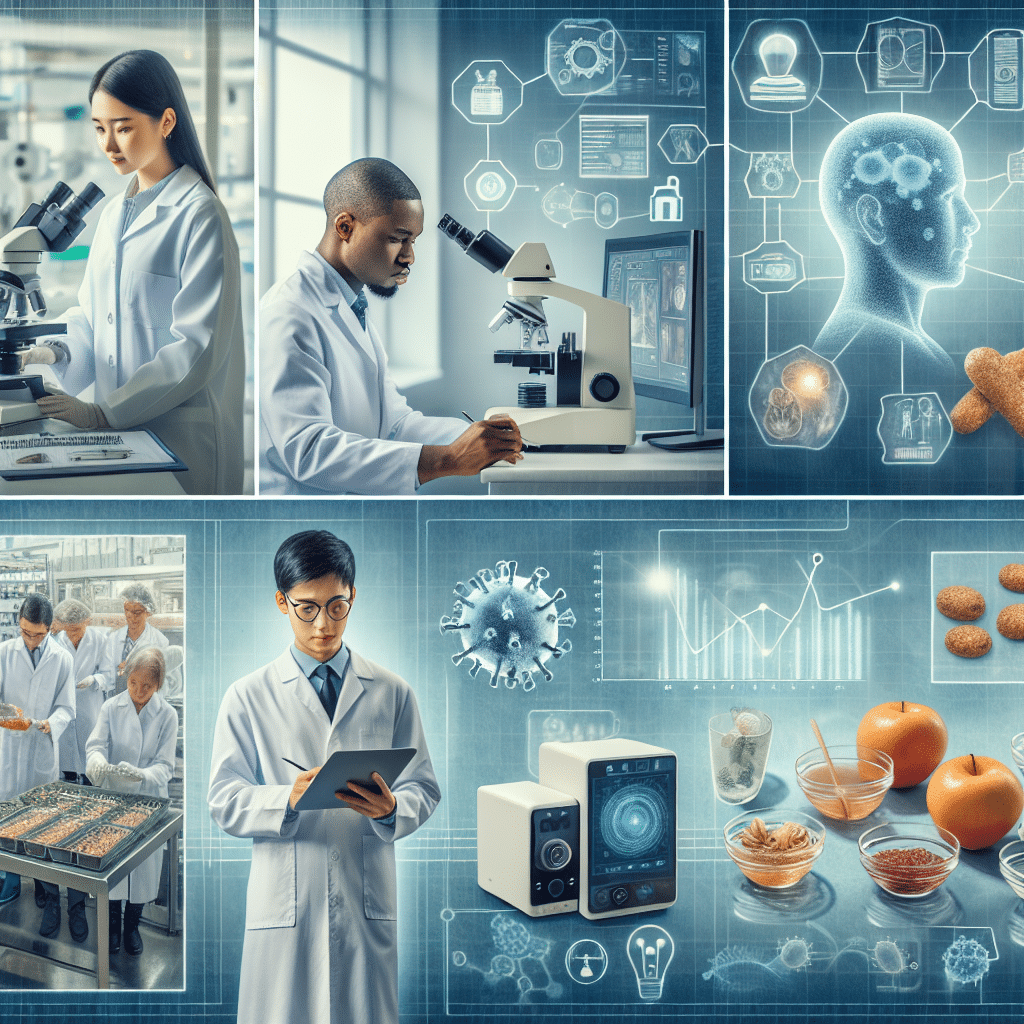How is Tech Tools Improving Food Safety?
-
Table of Contents
- Tech Tools Revolutionizing Food Safety: A Deep Dive
- The Role of Technology in Food Safety
- Traceability and Transparency
- Food Testing and Analysis
- Smart Packaging and Sensors
- Artificial Intelligence and Machine Learning
- Statistics Supporting the Impact of Tech on Food Safety
- Challenges and Future Directions
- Conclusion: Embracing Technology for Safer Food
- ETprotein: Your Partner in Food Safety and Quality
Tech Tools Revolutionizing Food Safety: A Deep Dive

Food safety is a critical concern for consumers, producers, and regulators alike. With the global food supply chain becoming increasingly complex, ensuring the safety of food products has become more challenging. However, technological advancements are playing a pivotal role in enhancing food safety measures. From farm to fork, tech tools are being deployed to detect contaminants, track food sources, and ensure compliance with safety standards. This article explores how technology is transforming the landscape of food safety, offering innovative solutions to age-old problems.
The Role of Technology in Food Safety
Technology has become an indispensable ally in the fight against foodborne illnesses and contamination. By leveraging cutting-edge tools, the food industry can better predict, prevent, and respond to potential safety issues. Here are some of the key areas where technology is making a significant impact:
Traceability and Transparency
One of the most significant contributions of technology to food safety is the ability to trace the origin and journey of food products. This traceability is crucial for quickly identifying and addressing sources of contamination.
- Blockchain: Blockchain technology offers a secure and transparent way to record transactions and track food products through the supply chain. By creating an immutable ledger, all parties involved—from farmers to retailers—can access real-time information about the product’s history.
- QR Codes and RFID Tags: Quick Response (QR) codes and Radio-Frequency Identification (RFID) tags are used to store data about food products that can be easily scanned and retrieved. This helps in providing detailed product information to consumers and supply chain participants.
Food Testing and Analysis
Advancements in food testing technologies allow for more rapid and accurate detection of pathogens and contaminants, reducing the risk of foodborne diseases.
- Spectroscopy: Spectroscopic tools can analyze the chemical composition of food without destroying the sample. This non-invasive method can detect adulterants and ensure the authenticity of products.
- Biosensors: Biosensors are devices that use biological molecules to detect chemical substances. They are increasingly used for on-site testing, providing quick results for the presence of pathogens or toxins.
Smart Packaging and Sensors
Smart packaging technologies are designed to monitor the condition of food products during storage and transportation.
- Time-Temperature Indicators (TTIs): TTIs are labels that change color based on the cumulative exposure of the product to temperature over time, indicating potential spoilage.
- Gas Sensors: These sensors can detect changes in the atmosphere inside packaging, such as the presence of gases produced by spoilage organisms, thereby alerting to potential safety issues.
Artificial Intelligence and Machine Learning
AI and machine learning algorithms are being used to predict and prevent food safety breaches by analyzing vast amounts of data from various sources.
- Predictive Analytics: By analyzing historical data, AI can predict potential outbreaks of foodborne illnesses, allowing for proactive measures to be taken.
- Image Recognition: Machine learning models trained on images of food can detect visual signs of spoilage or contamination that might be missed by the human eye.
Statistics Supporting the Impact of Tech on Food Safety
Statistics highlight the effectiveness of technology in improving food safety. For instance, according to a study by the Food and Agriculture Organization (FAO), the implementation of digital traceability systems can reduce the time needed to trace a food product from days to seconds. Moreover, research published in the Journal of Food Protection found that the use of biosensors could increase the detection rate of certain pathogens by up to 98%.
Challenges and Future Directions
While technology offers promising solutions, there are challenges to its widespread adoption, such as the cost of implementation, the need for standardization, and concerns about data privacy. However, as these issues are addressed, we can expect to see even more innovative tech tools being developed to ensure food safety.
Conclusion: Embracing Technology for Safer Food
In conclusion, technology is playing a transformative role in improving food safety. By enhancing traceability, speeding up testing, and enabling smarter packaging, tech tools are helping to reduce the risk of foodborne illnesses and build consumer trust. As the industry continues to innovate, we can anticipate a future where food safety is more manageable, efficient, and reliable than ever before.
ETprotein: Your Partner in Food Safety and Quality
ETprotein is at the forefront of providing high-quality protein products that meet the stringent standards of food safety. Their commitment to excellence ensures that their offerings, including a variety of organic plant-based proteins and L-(+)-Ergothioneine, are produced with the utmost care for consumer well-being. By choosing ETprotein, you are partnering with a company that values safety, quality, and innovation.
About ETprotein:
ETprotein, a reputable protein and L-(+)-Ergothioneine (EGT) Chinese factory manufacturer and supplier, is renowned for producing, stocking, exporting, and delivering the highest quality organic bulk vegan proteins and L-(+)-Ergothioneine. They include Organic rice protein, clear rice protein, pea protein, clear pea protein, watermelon seed protein, pumpkin seed protein, sunflower seed protein, mung bean protein, peanut protein, and L-(+)-Ergothioneine EGT Pharmaceutical grade, L-(+)-Ergothioneine EGT food grade, L-(+)-Ergothioneine EGT cosmetic grade, L-(+)-Ergothioneine EGT reference grade and L-(+)-Ergothioneine EGT standard. Their offerings, characterized by a neutral taste, non-GMO, allergen-free attributes, with L-(+)-Ergothioneine purity over 98%, 99%, cater to a diverse range of industries. They serve nutraceutical, pharmaceutical, cosmeceutical, veterinary, as well as food and beverage finished product distributors, traders, and manufacturers across Europe, USA, Canada, Australia, Thailand, Japan, Korea, Brazil, and Chile, among others.
ETprotein specialization includes exporting and delivering tailor-made protein powder and finished nutritional supplements. Their extensive product range covers sectors like Food and Beverage, Sports Nutrition, Weight Management, Dietary Supplements, Health and Wellness Products, and Infant Formula, ensuring comprehensive solutions to meet all your protein needs.
As a trusted company by leading global food and beverage brands and Fortune 500 companies, ETprotein reinforces China’s reputation in the global arena. For more information or to sample their products, please contact them and email sales(at)ETprotein.com today.












